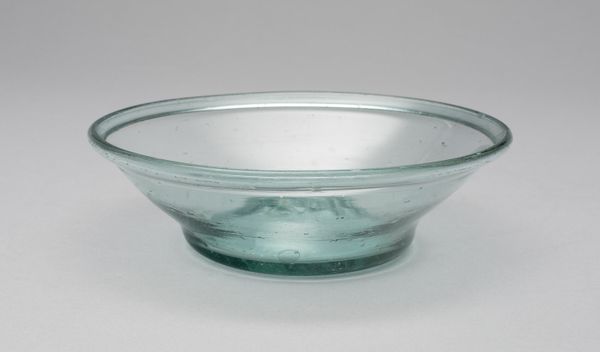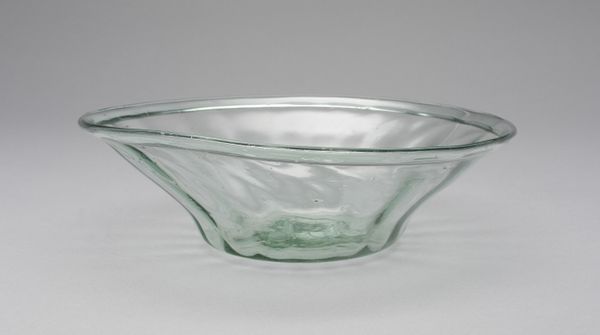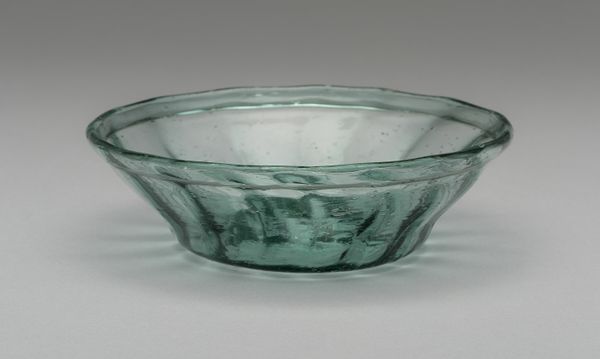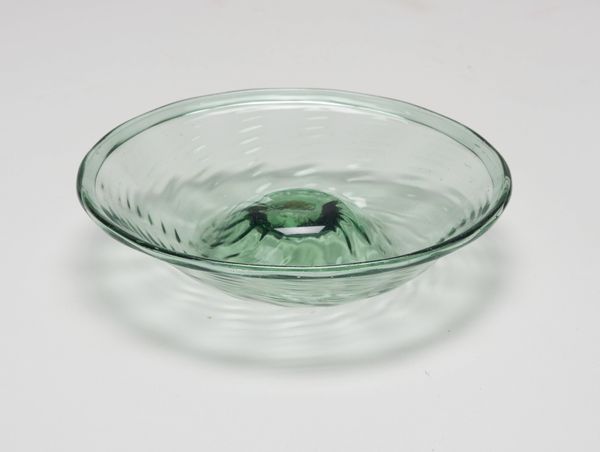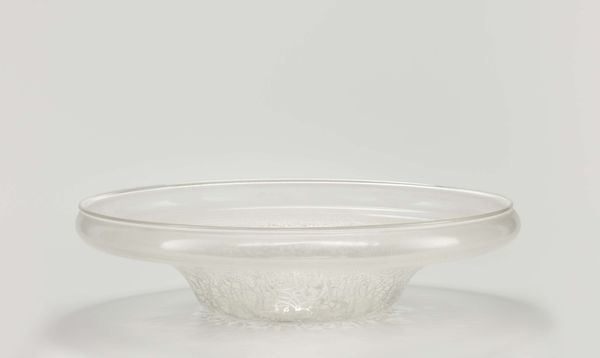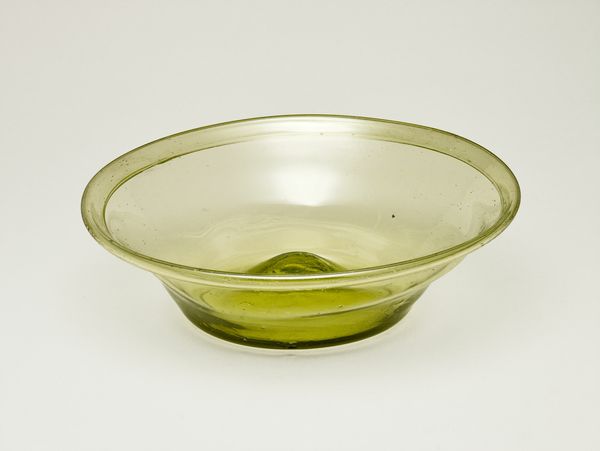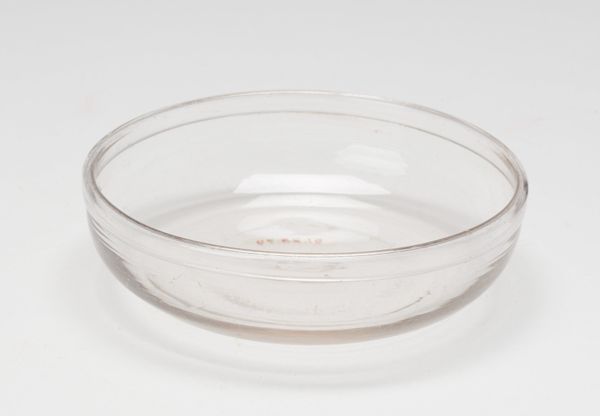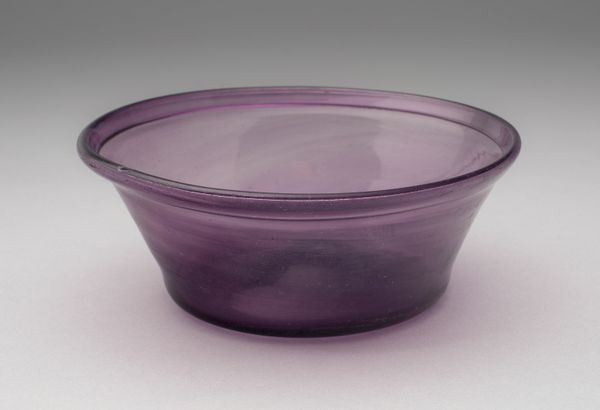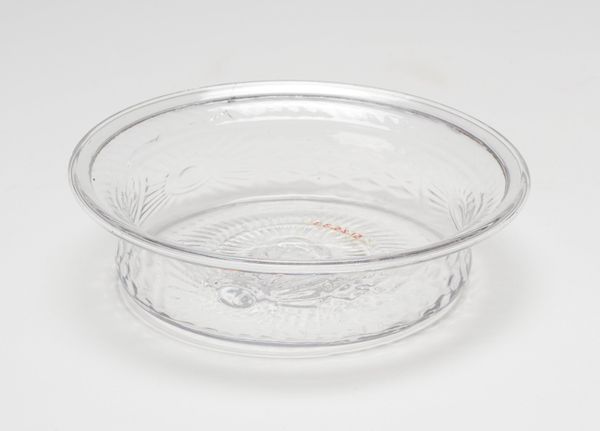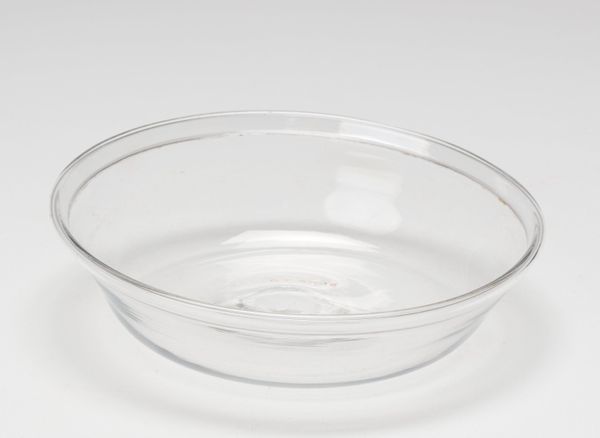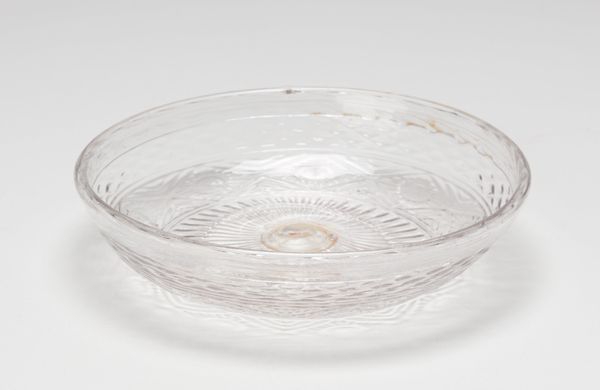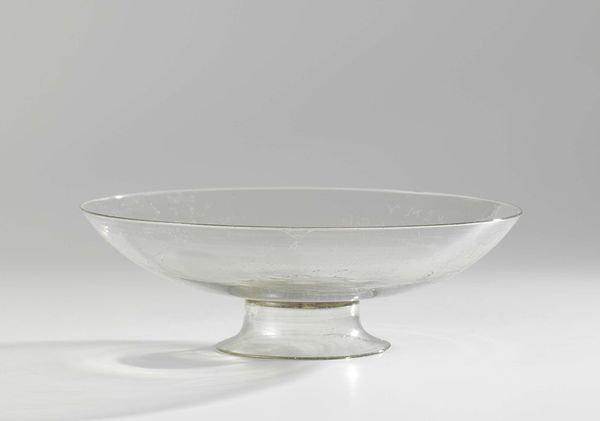
glass
#
glass
#
decorative-art
Dimensions: 15.2 cm (6 in.)
Copyright: Public Domain
Curator: This elegantly simple object, known as "Pan," was crafted between 1821 and 1829 by the Mantua Glass Works. It resides here at The Art Institute of Chicago as an exquisite example of early 19th-century glassware. Editor: It's lovely. It appears so fragile, so utterly dependent on light. The way the light plays through the slight imperfections in the glass gives it a gentle character. The pure form – a dish, so unassuming – has its own aesthetic charm. Curator: Yes, its utility is integral. We have to remember the Mantua Glass Works was embedded in a broader economic landscape. This "Pan," beyond its form, represents the skill of glassworkers during a specific industrial moment. The materials, likely locally sourced, the labor, the method of distribution, it’s all connected. Editor: But observe the curve—the gentle, almost imperceptible flare of the rim, the subtle thickening at the base. This simple bowl becomes a study in equilibrium. It exemplifies classical ideals within a humble form. It isn't merely utilitarian; its pleasing proportions evoke a feeling of tranquility. Curator: Surely, that feeling of tranquility results in part from how we perceive domestic objects? Examining who commissioned these, how widely available they were and in which regions can illuminate their value and the role of craft. Editor: I appreciate that, and I wouldn’t dispute the importance of context. However, looking at it now, in this gallery, separate from its original use—it presents an undeniable sense of poised, luminous grace. The interplay between transparency and solidity elevates it. Curator: That interplay is certainly part of what makes it so engaging to us now, removed from the daily experience of its production. Ultimately it speaks volumes of its socio-economic history, making one wonder who made it, used it and when we strip it bare, do we deny it this complex past by reducing it to just mere aesthetics? Editor: Perhaps. But what it inspires transcends those specificities. When viewed today, the "Pan," although functional, also achieves a purity and refinement that speak to a desire for beauty beyond necessity. It serves as an enduring meditation on light, form and intention.
Comments
No comments
Be the first to comment and join the conversation on the ultimate creative platform.
